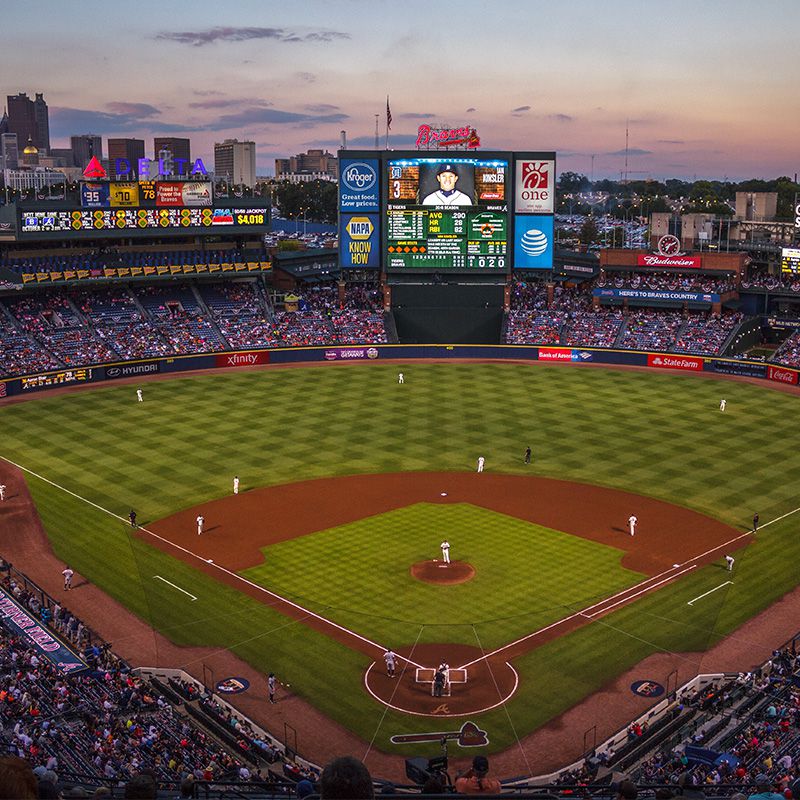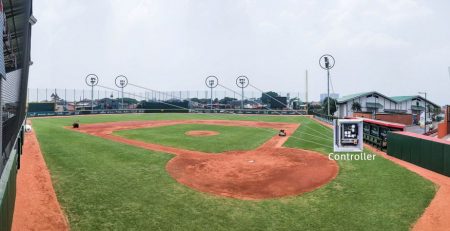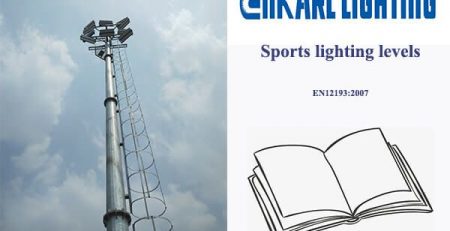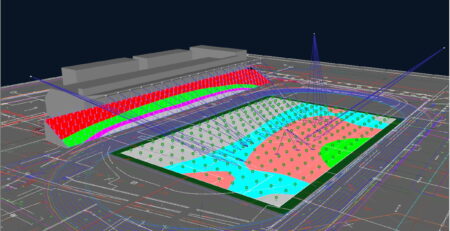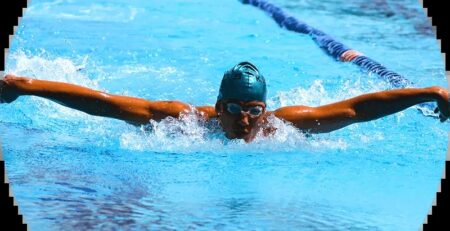Ultimate Guide to LED Baseball Field Lighting Design
Sports lights, specifically LED stadium lights, are essential for enhancing the performance and safety of baseball players on the court. The proper lighting design is crucial, especially for games played on a softball field, as it ensures optimal visibility and eliminates shadows. LED lamps are the preferred choice for their energy efficiency and superior illumination. Proper illumination not only allows athletes to see clearly but also ensures that they can accurately judge distances and react swiftly to game dynamics. Whether it’s a high school baseball field or a professional stadium, designing effective lighting systems is essential for an optimal playing experience.
From LED floodlights and spotlights to specialized sports lighting systems, we will delve into the various options available to illuminate baseball fields effectively. By understanding the importance of proper lighting and considering factors such as horizontal illuminance, brightness levels, uniformity, glare control, and energy efficiency, you can create an environment that maximizes player performance while prioritizing safety. This can be achieved by using lamps such as LED baseball field lights or LEDs.
So, if you’re looking for insights into baseball field lighting design or seeking guidance on choosing the right LED lights for your facility, this blog post is here to help!

Table of Contents
Importance of IK and IP Ratings for LED Lights
Explanation of IK and IP ratings and their significance in LED lights
IK and IP ratings are two important specifications that determine the durability, protection level, illuminance, lighting requirements, and lighting uniformity of LED lights and lamps. The IK rating measures the impact resistance, while the IP rating indicates the degree of protection against dust and water ingress.
Considering the lighting requirements and ratings of the lighting system is crucial to ensure long-lasting performance in outdoor environments. It is important to assess the light uniformity in the outer field to guarantee optimal results. Understanding what IK and IP ratings mean can help make informed decisions when selecting suitable LED lights for illuminance in a lighting system. This is particularly important when it comes to baseball field lighting, where the level of illuminance is crucial for optimal visibility and performance.
How IK rating determine the impact resistance of lights
The IK rating is a measure of how well a lighting system, including LED baseball field lights, can withstand mechanical impacts while providing sufficient illuminance for baseball field lighting. It ranges from IK00 (no protection) to IK10 (highest protection). This illuminance rating quantifies the ability of a lighting system, such as LED baseball field lights, to resist external forces such as vandalism, accidental collisions, or severe weather conditions.
In baseball courts, having a high IK rating lighting system is essential for activities involving fast-moving balls or potential collisions with equipment. Opting for LED lights ensures proper illuminance in the stadium, including the outer field. A higher IK rating ensures that the LED baseball field lights can endure impacts without compromising their functionality, structural integrity, or illuminance. This factor is crucial when considering the cost and lux of the lighting fixtures.
LED lights with lower IK ratings may be more susceptible to damage from accidental hits or vandalism. By investing in luminaires with higher IK ratings, baseball court operators can minimize maintenance costs associated with frequent replacements due to impacts.
The importance of IP rating in protecting against dust and water ingress
While impact resistance is crucial for outdoor lighting fixtures, protection against dust and water ingress is equally important. This is where the IP rating becomes significant. The IP code consists of two digits: the first indicating solid particle protection (ranging from 0-6), and the second representing liquid ingress protection (ranging from 0-9K).
For baseball courts exposed to various weather conditions throughout the year, it’s vital to choose LED lights with high IP ratings. These ratings ensure that baseball field lights luminaires are well-sealed against dust, rain, and other environmental elements.
A higher IP rating signifies better protection against dust particles and water. For instance, an IP67-rated LED light is completely protected from dust and can withstand temporary immersion in water up to one meter deep. Such lights are suitable for outdoor installations where they may be exposed to heavy rain or splashes.
By selecting LED lights with appropriate IP ratings, baseball court owners can ensure the longevity of their lighting system. These ratings provide peace of mind, knowing that the luminaires are designed to withstand harsh weather conditions without compromising performance or safety.
Light Pole Height, Quantity, and Positioning
Determining the optimal height for light poles on baseball courts is crucial to ensure adequate illumination for players and spectators. The installation height of outdoor LED lighting plays a significant role in achieving uniform brightness across the field.
Several factors need consideration. The dimensions of the baseball court, particularly its length and width, play a vital role in establishing the appropriate pole height. A larger field may require higher poles to achieve sufficient coverage. The type of lighting fixtures used, such as LED floodlights or spotlights, can influence the optimal pole height.
To illustrate this point further, let’s consider an example scenario where a baseball court measures 90 feet by 90 feet. In this case, installing light poles with an approximate height of 30-40 feet on the baseball field would be suitable. However, for larger fields spanning 120 feet by 120 feet or more, high mast lights with heights ranging from 60 to 100 feet might be necessary to ensure proper illumination.
The number of light poles required on a baseball court depends on various factors, including field size and desired lighting levels. Smaller courts may only need a few well-placed poles to achieve adequate brightness. On the other hand, larger fields may require additional poles strategically positioned throughout the area.
Considerations for positioning the light poles are essential to minimize shadows and provide uniform illumination across the entire playing surface. Placing them too far apart can create dark spots and compromise visibility for both players and spectators. Therefore, it is crucial to carefully plan their layout and location.
Here are some key points regarding strategic positioning:
- Conduct a thorough assessment of potential shadow areas during different times of day.
- Avoid placing light poles directly behind the home plate or pitcher’s mound to prevent glare.
- Position light poles along the perimeter or just outside it for maximum coverage.
- Consider the direction of prevailing winds to minimize potential flickering caused by pole shadows.
By following these guidelines, baseball courts can ensure optimal lighting conditions for players and spectators alike. Proper installation height, quantity, and strategic positioning of light poles contribute to an enjoyable and safe sporting experience.
Wattage, Quantity, and Price Considerations
Several factors need to be taken into consideration. One of the crucial aspects is selecting the appropriate wattage for the lights. Determining the ideal quantity of lights based on court dimensions is essential. Moreover, balancing cost considerations with quality plays a vital role in choosing the right lighting fixtures.
Selecting the Appropriate Wattage
The wattage of baseball court lights directly impacts their brightness and energy consumption. It is important to strike a balance between providing sufficient illumination for players and minimizing electricity costs. Here are some factors to consider when selecting the appropriate wattage:
- Court Size: Larger courts require higher wattages to ensure uniform lighting across the entire playing area.
- Lighting Standards: Referencing industry standards can help determine recommended wattages based on court size and level of play.
- Energy Efficiency: Opting for LED lights can significantly reduce power consumption while still providing ample illumination.
By considering these factors, you can choose an optimal wattage that provides adequate visibility while keeping electricity costs in check.
Determining the Ideal Quantity of Lights
The quantity of lights needed for a baseball court depends on its dimensions and desired light levels. Insufficient lighting may result in shadows or dark spots that could hinder gameplay, while excessive lighting may lead to unnecessary energy waste and increased costs. To determine the ideal quantity of lights:
- Court Layout: Analyze the layout of your court and identify areas where shadows might occur due to obstructions like poles or trees.
- Uniformity Requirements: Consider whether your league or organization has specific guidelines regarding light uniformity across different areas of the court.
- Light Spacing: Calculate an appropriate distance between each light fixture based on their beam angle and coverage area.
Taking these factors into account will help you determine how many light fixtures are required to achieve optimal visibility and uniformity on the baseball court.
Balancing Cost Considerations with Quality
Cost is an important consideration. However, it is crucial not to compromise on quality and long-term maintenance costs. Here are some key points to keep in mind:
- Budget Allocation: Determine a realistic budget for your lighting project, considering both upfront costs and long-term savings.
- Maintenance Costs: Evaluate the expected maintenance requirements of different lighting options, including bulb replacements and fixture upkeep.
- Warranty Period: Look for lights that come with a substantial warranty period, as this can help minimize future expenses.
By striking the right balance between upfront costs, maintenance expenses, and quality, you can ensure that your baseball field lighting design meets both your budgetary constraints and long-term performance expectations.
Optimal Positioning of Light Fixtures
Positioning light fixtures around a baseball court is crucial to ensure optimal visibility for players and spectators alike. The right placement not only avoids glare but also ensures an even distribution of light across the entire playing area.
Angling Fixtures Away from Players’ Line of Sight
One of the primary considerations in positioning outdoor LED lighting fixtures is to avoid creating glare that can hinder players’ performance. Glare occurs when excessive brightness impairs vision, making it difficult for players to track the ball or judge its trajectory accurately. To prevent this, it is essential to angle the LED floodlights or spotlights away from players’ line of sight.
By angling the fixtures downward at an appropriate angle, you can minimize direct glare while still providing sufficient illumination on the field. This ensures that players have clear visibility without any hindrance caused by bright lights shining directly into their eyes.
Ensuring Even Distribution of Light
Another critical aspect of baseball field lighting design is ensuring uniform and even distribution of light across the entire playing area. Uneven lighting can create dark spots or shadows, making it challenging for players to see clearly and react quickly during gameplay.
To achieve consistent illumination, a well-planned lighting layout must be implemented. This involves strategically placing multiple lighting fixtures throughout the field, taking into account factors such as mounting height, beam angles, and spacing between fixtures. By carefully considering these aspects, you can ensure that every corner of the baseball court receives adequate lighting coverage.
LED sports lighting solutions are commonly used for their versatility and energy efficiency. LED floodlights and spotlights offer high-quality lighting output with excellent horizontal illuminance levels required for optimal visibility on a baseball field.
Lighting System Design Considerations
When designing a baseball court’s lighting system, several factors need consideration to meet the specific lighting requirements of the sport. These factors include:
- Light Source: LED lamps are the preferred choice due to their long lifespan, energy efficiency, and ability to provide high-quality illumination.
- Fixture Placement: Determine the optimal number and placement of lighting fixtures based on the field size, shape, and desired lighting levels.
- Mounting Height: The height at which fixtures are mounted affects both the distribution of light and potential glare issues. It is essential to strike a balance between these factors for optimal performance.
- Lighting Output: Ensure that the selected LED floodlights or spotlights have sufficient lumen output to meet the required illuminance levels for baseball courts.
- Glare Control: Implement measures such as shielding or louvers to minimize direct glare from reaching players’ eyes.
By considering these aspects during the lighting system design process, you can create an effective and efficient baseball field lighting solution that enhances visibility while minimizing discomfort for players.
Achieving the Proper Brightness Level
Proper lighting is crucial for baseball courts to ensure optimal visibility and enhance the overall playing experience. To achieve the right brightness level, several factors need to be considered, including recommended light levels for different areas within a baseball court, techniques to achieve consistent illumination throughout the playing surface, and adjustments needed based on natural or artificial ambient lighting conditions.
Understanding recommended brightness levels for different areas within a baseball court is essential in designing an effective lighting system. The illuminance requirements vary depending on the specific area of the field. For instance, higher light levels are necessary around home plate and infield areas compared to outfield sections. This difference in illuminance ensures that players can accurately track and react to fast-moving balls.
To achieve consistent illumination throughout the playing surface, it is crucial to use appropriate outdoor LED lighting fixtures such as floodlights or spotlights specifically designed for sports lighting. LED technology offers numerous advantages over traditional lighting sources like metal halide lamps due to its higher energy efficiency, longer lifespan, and better control over beam angles. These fixtures can be strategically positioned on light poles surrounding the field at an optimal installation height to minimize shadows and provide uniformity across all areas.
Adjustments may be required based on natural or artificial ambient lighting conditions. For example, during daytime games with sufficient natural daylight, lower light levels may be acceptable. In contrast, evening or night games necessitate higher illuminance levels to compensate for reduced visibility caused by darkness.
Moreover, considering color temperature is important in baseball court lighting design as it affects visual perception and player performance. Choosing LEDs with an appropriate color rendering index (CRI) ensures accurate color representation of objects under illumination while maintaining good visibility.
In addition to meeting illumination requirements, other factors must also be taken into account when designing a baseball field lighting system:
- Light loss: Accounting for potential light loss due to aging fixtures or dirt accumulation helps maintain consistent brightness levels over time. LED lighting systems with long lifespans and warranties can minimize maintenance costs associated with frequent replacements.
- Light pollution: Properly designed lighting fixtures and control mechanisms help minimize spill light and glare, reducing light pollution and ensuring that the focus remains on the playing area without disturbing nearby neighborhoods or interfering with television broadcasting.
- Uniformity: Achieving uniform illumination across the field is crucial to eliminate shadows or dark spots that may hinder player visibility. Lighting layout, fixture positioning, beam angles, and lighting output contribute to achieving the desired uniformity.
- Energy efficiency: LED technology offers significant energy savings compared to traditional lighting solutions like high-intensity discharge (HID) lamps. Choosing LED baseball field lights not only reduces electricity costs but also aligns with sustainability goals.
Uniformity, CCT, CRI, and Glare Considerations
Uniformity plays a crucial role in the lighting design of baseball courts. It ensures that the entire playing area is evenly illuminated, minimizing shadows and providing optimal visibility for players and spectators alike. Achieving proper lighting uniformity requires careful planning and consideration of various factors.
Correlated Color Temperature (CCT) is an essential aspect to understand when designing baseball field lighting. CCT refers to the color appearance of light emitted by a source. By selecting the appropriate CCT, visibility can be enhanced, allowing players to track the ball accurately and react swiftly. A higher CCT, such as 5000K or above, is often preferred for outdoor sports facilities like baseball courts as it provides a brighter and more vibrant atmosphere.
Another critical factor to consider is the Color Rendering Index (CRI), which measures how accurately colors are represented under a given light source compared to natural daylight. Baseball games involve different colored objects like uniforms, equipment, and signage. Therefore, choosing lights with a high CRI will ensure that these colors are vividly portrayed on the field. A CRI rating of 80 or above is recommended for baseball court lighting.
Glare control is vital in any sports facility to prevent discomfort for both players and spectators while maintaining optimal visibility. Excessive glare can hinder performance by causing eye strain or even temporary blindness. To minimize glare on baseball courts, fixtures should be properly shielded to direct light downward onto the playing surface without creating excessive upward glare.
To achieve effective glare control:
- Use fixtures with adjustable shielding options.
- Install baffles or louvers around light sources.
- Opt for indirect lighting techniques where feasible.
- Conduct regular maintenance to ensure fixtures remain clean and well-aligned.
By implementing these measures, you can create an environment where players can focus on their game without distraction while ensuring spectators have an enjoyable viewing experience.
Key Takeaways on Baseball Field Lighting Design
In conclusion, when designing lighting for baseball courts, there are several key considerations to keep in mind. First and foremost, the IK and IP ratings of LED lights are crucial for durability and protection against environmental factors. The height, quantity, and positioning of light poles play a significant role in ensuring optimal visibility on the field. Wattage, quantity, and price considerations should also be taken into account to balance performance with cost-effectiveness.
Furthermore, achieving the proper brightness level is essential for player safety and visibility. Uniformity, CCT (Correlated Color Temperature), CRI (Color Rendering Index), and glare considerations contribute to an overall better playing experience. By carefully assessing these factors and making informed decisions during the lighting design process, you can create a well-lit baseball court that meets both functional requirements and aesthetic appeal.
For more detailed information on each of these aspects of baseball field lighting design, consult the sections completed before this conclusion. By implementing these guidelines effectively, you can ensure that your baseball court is properly illuminated for players and spectators alike.
FAQs
How do IK and IP ratings affect LED lights’ durability?
IK ratings measure the resistance of a light fixture against impact or vandalism while IP ratings indicate its protection against dust and water ingress. Higher IK or IP ratings signify greater durability and reliability in outdoor environments.
What impact does light pole height have on visibility?
The height of light poles determines how far-reaching their illumination will be on the baseball court. Properly positioned poles at an adequate height ensure uniform lighting across the entire playing area.
Why is uniformity important in baseball field lighting?
Uniformity ensures consistent illumination levels throughout the field without any dark spots or excessively bright areas. This enhances player safety by minimizing shadows or blind spots.
How does color temperature (CCT) affect lighting quality?
CCT refers to the color appearance of light, ranging from warm (yellowish) to cool (bluish). Choosing the appropriate CCT can influence visibility, player comfort, and overall aesthetic appeal.
What is glare, and why should it be considered in lighting design?
Glare refers to excessive brightness or visual discomfort caused by direct or reflected light. By minimizing glare through proper fixture positioning and shielding, players’ vision can be optimized for better performance on the field.

